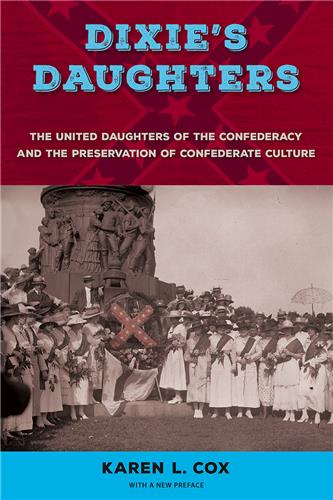Search Results for 'virginia woolf'
123 results for 'virginia woolf'
Please note that while you may order forthcoming books at any time, they will not be available for shipment until shortly before publication date
An essential guide to native plants of the Southeast
Examines Shaw's work in the theater and the use of theater in his work. Part I, "Bernard Shaw, Director" was originally published in 1971 and remains the most authoritative work on this aspect of Shaw. Part II: "The Director as Interpreter:
Even without the right to vote, members of the United Daughters of the Confederacy proved to have enormous social and political influence throughout the South--all in the name of preserving Confederate culture. Karen L. Cox's history of the UDC, an organization founded in 1894 to vindicate the Confederate generation and honor the Lost Cause, shows why myths surrounding the Confederacy continue to endure.
For as long as orchid hybrids have been made, breeders have been naming them after prominent women of the day. Chadwick & Son Orchids has named and presented namesake cattleyas to nineteen consecutive First Ladies. First Ladies and Their Orchids: A Century of Namesake Cattleyas tells the story of these nineteen hybrids and the First Ladies they were named after, from Woodrow Wilson’s second wife, Edith, who coveted “canaries, bourbon, and orchids,” through Doctor Jill Biden, who lives just minutes from the Chadwick home in Wilmington, Delaware.
This is the first volume to bring together archaeology, anthropology, and art history in the analysis of pre-Columbian pottery. While previous research on ceramic artifacts has been divided by these three disciplines, this volume shows how integrating these approaches provides new understandings of many different aspects of Ancient American societies.
Cuba had the largest slave society of the Spanish colonial empire. At Santa Ana de Biajacas the plantation owner sequestered slaves behind a massive masonry wall. In the first archaeological investigation of a Cuban plantation by an English speaker, Theresa Singleton explores how elite Cuban planters used the built environment to impose a hierarchical social order upon slave laborers.
Bringing together Robert A. Hill’s most important writings for the first time, this collection serves as a testament to Hill’s legacy as a pioneering scholar, activist, archive builder, and editor who shaped the study of Garveyism and pan-Africanism.
The first reference of its kind for southern gardens, Landscaping with Conifers and Ginkgo for the Southeast is a compilation of years of research and horticulture experience that will aid anyone, whether novice or professional, in creating beautiful year-round landscapes.











